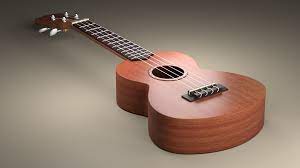The ukulele, affectionately known as the uke, is a small stringed instrument that has a rich history and has been embraced by many musicians across various genres. From Hawaii to the United States and beyond, the uke has been played by a diverse group of musicians, each one bringing their unique style and flair to the instrument. In this article, we will explore the history and development of the uke while highlighting some of the legendary ukulele players and their signature styles.
The origins of the uke can be traced back to Hawaii in the late 19th century when Portuguese immigrants introduced a small guitar-like instrument called the machete. The machete had four strings and was played with a pick, and it quickly became popular among the Hawaiians. However, it wasn't until a Hawaiian musician named João Fernandes adapted the machete to better suit the Hawaiian musical style that the instrument truly took off. Fernandes made the instrument smaller, gave it a more curved shape, and changed the tuning to better fit the Hawaiian music scale. This new instrument was called the ukulele, and it quickly became popular in Hawaii and beyond.
In the early 20th century, the uke gained popularity in the United States, thanks to the Panama-Pacific International Exposition held in San Francisco in 1915. A group of Hawaiian musicians performed at the event, and their performance was a huge success, helping to popularize the ukulele in the United States. During the 1920s and 1930s, the uke became a staple of popular music, with many famous musicians, including George Formby, Roy Smeck, and Cliff Edwards, playing the instrument and helping to spread its popularity.
George Formby, a British musician, was known for his unique style of playing the uke, which involved a fast and rhythmic strumming style. He often incorporated comedy into his performances, making him a beloved figure in the UK music scene. Roy Smeck, an American musician, was a master of various stringed instruments, including the uke. He was known for his virtuosic playing style, which included intricate fingerpicking and fast-paced runs up and down the fretboard. Cliff Edwards, also known as Ukulele Ike, was an American singer and musician who had a distinctive falsetto singing voice. He often played the uke in a jazz-influenced style, which incorporated syncopated rhythms and complex chord progressions.
In the 1940s and 1950s, the uke's popularity waned somewhat, as other instruments, such as the guitar, became more popular. However, the uke experienced a resurgence in the 1960s, when it was embraced by the folk music movement. Musicians such as Tiny Tim and Peter Seeger helped to popularize the instrument once again, and the uke became a beloved instrument for a new generation of musicians.
Tiny Tim, an American musician, was known for his high-pitched singing voice and his love of the uke. He often played the instrument in a quirky and whimsical style, which included falsetto vocals and strummed rhythms. Peter Seeger, also an American musician, was a folk icon who played a wide variety of instruments, including the uke. He often incorporated political and social commentary into his music, and his uke playing was characterized by simple chord progressions and singing in a straightforward and accessible style.
In recent years, the uke has continued to gain popularity around the world. The instrument has been embraced by musicians in a variety of genres, including indie, pop, and rock. Jake Shimabukuro, a Hawaiian musician, has gained widespread recognition for his virtuosic uke playing. He incorporates a variety of techniques, including fingerpicking, strumming, and tapping, to create a unique and dynamic sound. Shimabukuro has performed with a wide range of musicians, including Yo-Yo Ma and Bette Midler, and has even played at the White House.
Another notable ukulele player is Taimane Gardner, also from Hawaii. She is known for her flamboyant and theatrical performances, which often involve costumes and choreography. Gardner incorporates a variety of musical genres into her uke playing, including rock, classical, and traditional Hawaiian music.
In conclusion, the uke has a rich history and has been embraced by a diverse group of musicians throughout the years. From George Formby's rhythmic strumming to Jake Shimabukuro's virtuosic playing, each player has brought their unique style and flair to the instrument. The uke's popularity shows no signs of slowing down, and it is sure to continue to inspire and captivate musicians for years to come.

Comments